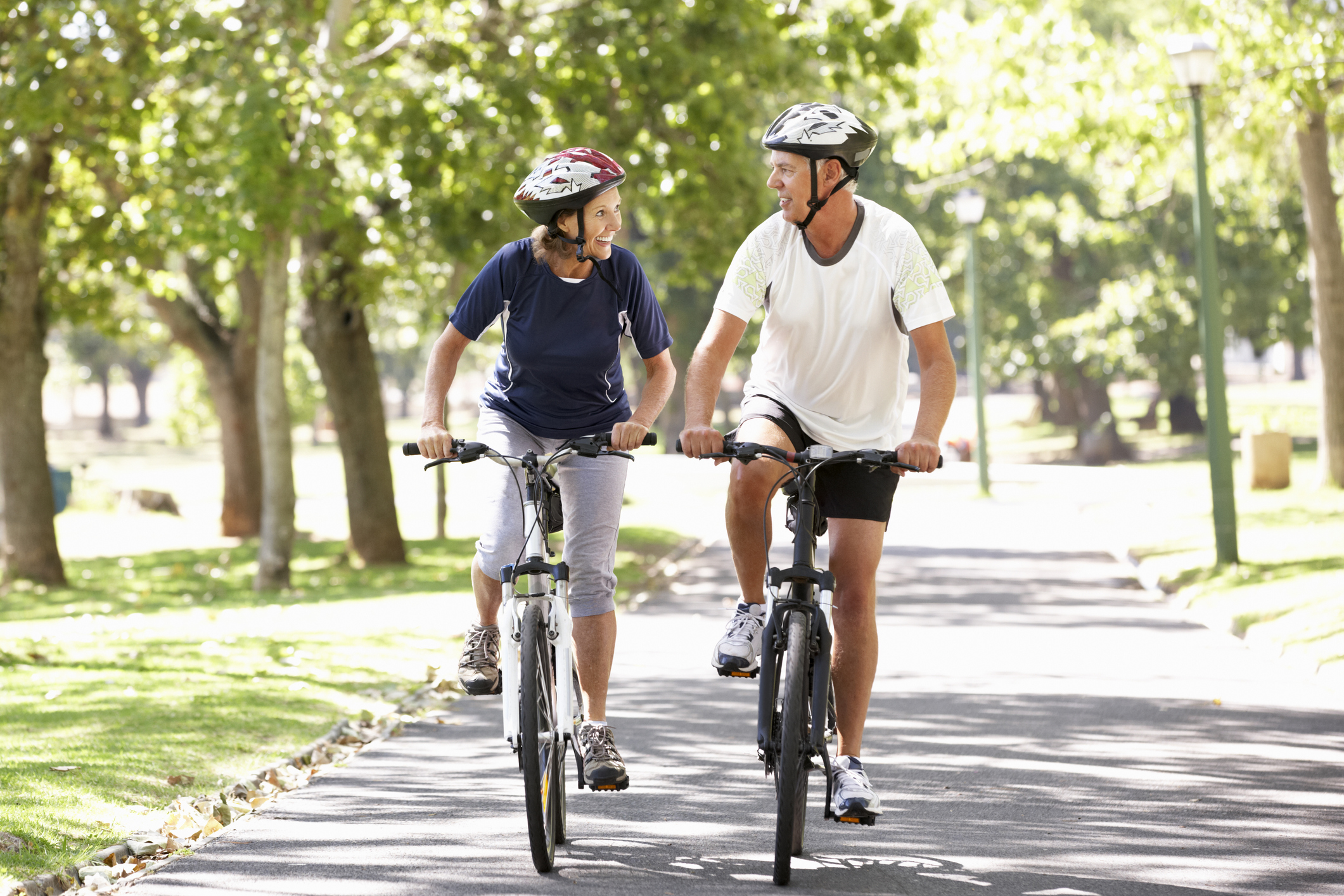Many older adults remain physically active in their retirement years, enjoying more time to golf, play pickleball, or join a masters swim club. But sometimes injuries can sideline even the most active senior – cycling may be the answer to maintaining fitness while protecting joints.
According to a recent Washington Post Well+Being report, riding a bike is an ideal low-impact exercise for older adults because it is easier on the body than walking or running, especially for seniors with osteoarthritis or other orthopedic issues. Cycling outdoors helps to improve balance and stability, as well as spatial awareness. Spending time in natural sunlight can also help to boost mood and improve sleep.
If it’s been a while since you rode a bike, be sure to get fitted properly at a local bike shop where you can test drive different configurations. Seniors with balance problems may want to consider a three-wheeler, and recumbent bikes are a good option for those with back problems. If you are happy with your current bike, an annual tune-up can significantly improve performance and safety.
Electric bikes are also a popular choice for older riders, giving them the option for a little help on the long uphill climbs. With the reassurance an electric motor provides, riders are more likely to go for longer rides, more frequently.
Safety First
Wearing a well-fitted bike helmet is a must for any rider today to reduce the risk of serious injury. Being visible to others on the road or pathway is also essential in order to avoid accidents – front and back lights and reflective clothing should be used at all times, even during the day to improve visibility. Adding mirrors can also help keep riders more aware of their surrounding.
Riding in a group, or taking a biking class can help novice and out-of-practice riders stay safe, learn to navigate obstacles, and brush up on basic bike maintenance practices. Riding on car-free paths or trails can help cyclists gain more confidence and skill before riding in traffic. Choose low-traffic streets with bike lanes to minimize any risk.
A bell or calling out “on your left!” alerts pedestrians sharing paths and trails of your approach, helping to prevent surprises that can lead to crashes or falls. Using hand signals will also help riders avoid accidents.
Learn more about getting road or trail ready by following this link to online learning provided by the League of American Bicyclists.






Add Your Voice
0 Comments
Join the Discussion